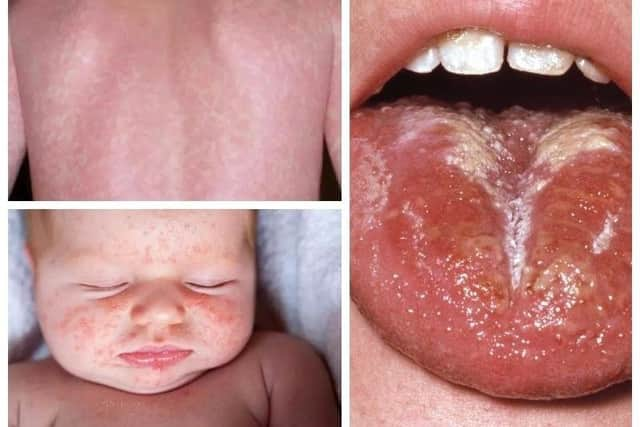Scarlet fever: Public health boss Greg Fell warns Sheffield seeing rise in contagious ‘Victorian’ infection
and live on Freeview channel 276
Director of Public Health in Sheffield, Greg Fell, says the city has seen a increase in cases of Scarlet Fever, and warned people to avoid spreading it further across the area.
Confirming the rise cases, Mr Fell said: “It is a notifiable disease, we always keep an eye on these. It is happening more widely too, but yes, Sheffield has seen a rise in Scarlet Fever cases this year.
Advertisement
Hide AdAdvertisement
Hide Ad“While these numbers are not high, Scarlet Fever is usually a mild illness but can be serious if left untreated. It's highly contagious and mostly affects young children. So keep an eye out for the first signs which are flu-like symptoms such as a high temperature, sore throat and swollen neck glands, and a bumpy, rough feeling rash usually appears after 12 to 48 hours on the chest and tummy.


“If you think your child is showing signs of scarlet fever it's important to contact your local GP or NHS 111. Importantly - stay away from nursery, school or work for 24 hours after taking the first dose of antibiotics.”
Scarlet fever is a bacterial illness that was commonplace during Victorian times, and NHS officials say it has seen a steep rise in cases over the past month. Scarlet fever is a contagious infection that can affect people of any age however is more commonplace in children under the age of 10 - leading the UK Health Security Agency to issue guidance for school, nurseries and other childcare settings.
As recently as the 1950s, patients catching the disease in Sheffield were sent to Lodge Moor Hospital to be put in isolation.
Advertisement
Hide AdAdvertisement
Hide AdThe Government indicated that the latest rise is a ‘likely result of the withdrawal of measures implemented during the coronavirus pandemic to reduce transmission’. Officials at the Department for Heath first issued guidance regarding Scarlet Fever in 2019 when there was an increase in transmission rates and despite the illness now treatable through antibiotics, it is considered a notifiable disease - a disease that must be informed by health care professionals to local health protection teams in the event of suspected cases.
What are the symptoms of Scarlet Fever?
The UK Health Security Agency issued the following information regarding the symptoms of Scarlet Fever:
The first symptoms of scarlet fever often include a sore throat, headache, fever, nausea and vomiting. After 12 to 48 hours the characteristic fine red rash develops (if you touch it, it feels like sandpaper). Typically, it first appears on the chest and stomach, rapidly spreading to other parts of the body.
On more darkly-pigmented skin, the rash may be harder to spot, although the ‘sandpaper’ feel should be present; fever over 38.3º C (101º F) or higher is common; white coating on the tongue which peels a few days later, leaving the tongue looking red and swollen (known as ‘strawberry tongue’); swollen glands in the neck; feeling tired and unwell; flushed red face, but pale around the mouth. The flushed face may appear more ‘sunburnt’ on darker skin; peeling skin on the fingertips, toes and groin area, as the rash fades.
